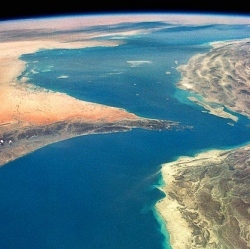
How do you protect Earth? "By going into outer space," Bezos said on Tuesday. What Bezos meant was something "slightly more measured" than Musk’s idea of building colonies on Mars. Activities that require the most energy should be performed in space, in order to leave Earth clean and habitable.
"Earth will be zoned residential and light industrial. You shouldn’t be doing heavy energy on Earth. We can build gigantic chip factories in space," he said. Amazon.com and Blue Origin CEO Jeff Bezos envisions “millions” of people living in orbit as his exploration company, Blue Origin, and other commercial ventures develop spacecraft to make travel more widely available.
Investment from wealthy entrepreneurs with a passion for space will usher in a new era that makes leaving the Earth’s atmosphere accessible to anyone, Bezos said Tuesday. Earlier, he announced that Blue Origin will put $200 million into a new rocket assembly facility and launch site in Cape Canaveral, Florida.
"Our ultimate vision is millions of people living and working in space," Bezos said during a rare, 30-minute interview in Florida with reporters after the Blue Origin announcement.
"We have a long way to go."
The 52 year old Bezos the world’s seventh-richest man with a net worth of around $62 billion. Bezos is over 4 times richer than Elon Musk ($13 billion net worth). Elon Musk also wants millions of people in space. Although Elon wants more people in cities in Mars than in orbit.
Bigelow expandable space stations and larger reusable rockets would enable large scale space colonization. Bigelow Aerospace has designed 2100 cubic meter expandable space station modules which might be launchable by a slightly refined Spacex Heavy. Bigelow now has a expanded room on the International Space Station.
The larger planned Mars colonization transport (MCT) would be able to launch modules that are three to five times larger. Fuel could be launched and stored at fuel depots in orbit. This would enable more cargo to be moved to Mars with refueling in orbit and other locations in space.
SpaceX could launch 100 Bigelow 2100 cubic meter modules for about $1 billion using two reusable Spacex Heavies over as little as one year (one launch per week). Blue Origin might also be able to make larger reusable rockets.
This would be 200,000 cubic meters of volume. This would be enough for 2000 people with the same facilities per person as the Hercules resupply depot design.
Spacex could launch 1000 Bigelow 6000 cubic meter modules in one year.
This would be 600,000 cubic meters of volume. This would be enough for 6000 people with the same facilities per person as the Hercules resupply depot design.
Reaching 1 million people in orbit would be 170 of the one thousand expandable modules. 6000 people is a bit more than the number of people in a large aircraft carrier.
1 million people would be like 170 large light weight versions of cruise ships, hotels or air craft carrier structures in orbit.
